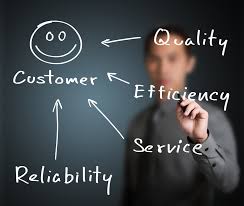
Contact centers are shifting from cost centers to revenue generators. Contact centers have historically been treated as cost centers. The company’s profit margins financed the contact center—which might have only indirectly contributed to profits. However, as contact center concept has evolved and matured, we’ve realized that contact centers are more responsible for generating revenue than we ever knew. For example, an inbound customer support team does not directly drive company profits. But if that team delivers poor customer service experiences, the resulting negative social media and bad press could lead to a significant decline in sales.
To realize their contact center as a revenue generator as opposed to a cost center, businesses must ensure their operations are cost effective—that queues and trunks are well-occupied, that they have the right number of agents answering calls and that calls are being handled efficiently. Businesses also need to verify the performance of their telecom systems, who agents are speaking with and whether money is being well spent. With the right contact center tools, businesses can do just that. Accurate forecasting, scheduling and reporting tools ensure resources are effectively deployed at all times. Real-time alarms inform supervisors of performance issues and inefficiencies so they can act immediately to maintain service levels and control costs. With the right reporting metrics, contact center supervisors can easily compare Key Performance Indicators (KPIs) like average handle time, service level or cost per call. Then, they can analyze these KPIs in the context of new sales, customer retention and customer satisfaction.
These measures can prove how a contact center can be a profit center. The right contact center tools can set a business up for repeated sales, satisfied customers, and long lasting relationships. To learn more, request a free consultation from Warwick today!




